Matador Network's Blog, page 1081
June 6, 2019
Traveling during hurricane season
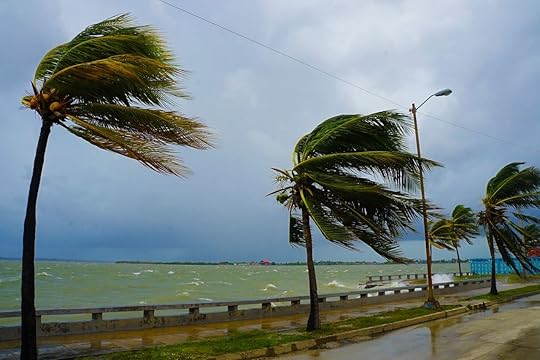
Traveling during hurricane season is a mixed bag. Generally, you’ll get cheaper flights, cheaper hotel rooms, and emptier beaches than you would during calmer times of the year. But it also means your vacation could be canceled or, worse, interrupted by a vicious storm. Travelers tell horror stories of getting stuck on Caribbean islands for weeks after a hurricane hits, and traveling during this time of year is often full of uncertainty and anxiety.
To help put some of that anxiety to rest, we talked with Meghan Walch, Product Manager at InsureMyTrip.com, who hipped us to some of the key stuff to know if you’re planning a vacation during hurricane season. While the easiest answer is to just avoid traveling during hurricane season altogether, oftentimes summer is the only time people are able to take off from work, and if the Bahamas are on their bucket list, they’re going to the Bahamas, damn it. So whether you’re dead set on going or you just accidentally booked a trip during a flight sale without considering weather patterns, here’s everything you need to know about traveling during hurricane season.
Hurricane season runs now through November.
Though we already had a tropical depression in May, technically the beginning of hurricane season is June 1. It runs throughout summer, ending November 30. That’s six months, if you’re counting. While storms can form at any point during those months, the height of the season is from mid-August to mid-October. So if you’re planning trips during those months, be especially vigilant.
Know if you’re traveling to a hurricane-prone area.
Pretty much any state or country around the Gulf of Mexico is fair game for a hurricane. As are nearly all Caribbean islands, with the exception of Aruba, Bonaire, and Curaçao, which lie where hurricanes almost never hit. The Atlantic Coast of the United States is also susceptible, more so in Florida and the Carolinas, but the northeast isn’t immune — just ask the Jersey Shore.
Hurricanes also form in the northeast Pacific Ocean, specifically along the coast of Baja California.
You need to buy travel insurance early.
Airlines or cruise ships will usually give you a refund if they cancel your booking due to weather. But if they don’t cancel and you decide not to travel anyway, you’re not getting any money back storm or no storm. So traveling to a hurricane-prone area during the season necessitates buying travel insurance.
“People should buy insurance early, like right after they pay any money towards their trip,” says Walch. “The earlier you purchase, the more you’re eligible for with your policy.”
Since insurance is, at its core, a gamble, you won’t be able to buy insurance once a major storm forms. This would be like placing a bet halfway into a horse race. So it’s wise to buy early.
“Typically it will cover you if your flight is delayed, the average up to 24-48 hours if all flights are grounded due to inclement weather,” says Walch. “It will cover you for prepaid, non-refundable costs if you have to cancel a trip for any covered reason, be that an airline, hotel, or anything non-refundable prior to departure.”
If you live in a hurricane-prone area, it will also cover you if your primary residence is uninhabitable. And if you don’t, it’ll cover you if your destination is uninhabitable.
Make sure to buy the right kind of travel insurance.
Like any kind of insurance, travel insurance policies vary widely by the type of coverage you want. InsureMyTrip actually has a quote calculator on its site, so you can plug in what you’re looking for and see what it costs. That said, if you’re the type who overly errs on the side of caution, you may want to look into “cancel for any reason” coverage, which will allow you to cancel your trip for full refunds even if the storm doesn’t end up coming close to your destination.
Hotels, airlines, and cruise ships might refund your money in the case of inclement weather. But they are not required to, so insurance is really the only way you can guarantee you’ll get money back.
Consider cruising.
Unlike airplanes and hotels, cruise ships are mobile. That means if a cruise line sees a storm is coming, it has the flexibility to change an itinerary to avoid it. Does that mean you might end up going to Nassau for the ninth time rather than having your long-awaited dive trip to Roatan? Yes, it does. But changes in itinerary are generally covered by travel insurance, so if you bought it, you won’t get stuck sipping drinks at Señor Frog’s if you don’t want to.
Though cruising definitely gives your trip its best odds of surviving a hurricane, nothing is guaranteed. For example, if a storm is headed for Miami — or another cruise departure city — no amount of itinerary changes will allow the ship to sail from a hurricane-plagued port. So there’s always a chance.
Bring the right supplies along.
Should you decide to buck the odds and head out during a hurricane, make sure you pack smart. Bring along stuff you might need should you find yourself living in the aftermath of a storm. This includes battery-powered USB chargers, battery-powered flashlights, a battery-powered radio, plenty of extra toiletries, and maybe even some water purification tablets. If you can spring for a solar-powered battery pack, that’ll be useful too. Though if cell service if down for extended periods of time your phone won’t be good for much other than taking pictures.
You might also want to pack a first aid kit and some non-perishable foods, so you’re not stuck in storm-hysteria grocery lines buying survival supplies at your destination.
Always carry cash.
If power and communications are out after the storm, your debit card immediately becomes a piece of useless plastic. Take out as much money as you can in local currency from an ATM, so should we revert to a cash-only society, you’re able to buy stuff like ice, food, and beer. Because Venmo probably won’t be working either.
Track with a weather app.
The nice thing about hurricanes is you generally know they’re coming. For people who live in hurricane-prone areas, tracking storms on weather apps is as much a part of summer as barbecues and baseball games. And if you’re traveling to one of those areas, you should probably be tracking the storm too.
The Weather Channel app is pretty good for this though you can also try RadarCast, Dark Sky, and Storm Shield. For the straight-from-the-horse’s-mouth forecast, bookmark nhc.noaa.gov. That’s the official site of the National Hurricane Center and will be the first to post latest tracking and forecast data.
Make a plan.
Just like residents in hurricane-affected areas, make a plan for what you and your family will do should a storm interrupt your vacation. That includes setting meeting points, creating contingency plans for if your phones go out, and having emergency points of contact back home. You may also want to plan to spend a lot of additional time in your destination because if flights become grounded, it can take a while to get out.
Check with your hotel to find out what its plan is.
Hotels should also have hurricane contingency plans, and if you’re staying in the face of a storm, good hotels will let you know exactly what it is. Some have shelters they take guests to, others have spaces within the hotel where everyone is required to go in the event of a storm. Some provide food and other necessities in an emergency. Others do not.
Whatever you do, don’t sit in your room during a hurricane, unless somehow your room is interior facing or has no windows. Exterior windows are the most dangerous place to be during a storm, and the last thing you want to do is ride it out in a wet, windy, strange place. 

More like this: Yes, you should probably get travel insurance
The post Traveling during hurricane season? Here’s everything you need to know appeared first on Matador Network.

Infinity pool on a London skyscraper

There are some pretty cool hotel pools out there, but this new infinity pool in London might top them all. The 600,000-liter pool will sit atop a new 55-story building, and the designers claim the concept is a world first. It’s “the only building in the world to incorporate a 360-degree infinity pool,” says Compass Pools. Situated atop a planned five-star hotel, the pool will be made from cast acrylic and have transparent sides and floors, so people in the floors below will be able to see swimmers above them.
Perhaps one of the most unique features of Infinity London is that there are no stairs on the outside of the pool, or the building, raising some questions about how swimmers are supposed to access it.
“We faced some quite major technical challenges to this building,” the design firm said, “the biggest one being how to actually get into the pool. The solution is based on the door of a submarine, coupled with a rotating spiral staircase which rises from the pool floor when someone wants to get in or out — the absolute cutting edge of swimming pool and building design and a little bit James Bond to boot!”
The pool will also have a built-in anemometer to monitor wind speed and be linked to a computer-controlled building management system to ensure that the pool’s temperature remains perfect (and doesn’t spill over the edge). The pool will be heated by waste energy from the building’s air conditioning system, making it pretty sustainable too.
If all goes well, construction of the pool will begin in 2020. 
H/T: CNN

More like this: The 11 dreamiest swimming pools in the world you can visit this summer
The post This London infinity pool will have 360-degree views, but they’re still working on how to get in and out appeared first on Matador Network.

Maps of how nations view other areas

One of the best parts about traveling is the cultural exchange, dispelling your preconceived notions about other countries, and learning how people abroad view your homeland. Sometimes we take for granted how much other countries understand about our own geography. It’s not surprising to learn that most Britons get the various regions of the US mixed up, and conversely, Americans are famously guilty of not quite grasping the geography of the nations they’re visiting. On Reddit, there are several maps poking fun at this very phenomenon. Users are posting visualizations of other countries’ geography, according to the often erroneous notions of their own country. The results are kind of offensive but pretty entertaining.

Photo: u/DavidMcFarlanee/Reddit
User DavidMcFarlanee posted a map of how British citizens see the US, and the map’s various geographic regions might sound a bit unfamiliar to the average American. New England is labeled “Small and Confusing,” much of the Southwest is termed “Yee Haw States,” and the Midwest is simply “Nothing Special.”

Photo: u/TheExtremeMidge/Reddit
On the other side of the coin, user TheExtremeMidge posted a map of how a US citizen views the UK. Scotland is termed the land of “Kilts and Scotch,” Wales is described as, “No idea, must be fake language,” Ireland is simply “Everyone is Fighting,” and the northern Scottish isles are “No idea, must be magical islands.”

Photo: u/uh-oh-spaghettios-/Reddit
Americas might not have much luck correctly identifying parts of the UK, but maybe they’ll have better luck with Europe? Nope, not so much. This map, created by user uh-oh-spaghettios, paints a pretty interesting picture of the European continent. Switzerland is identified as “rich bastards,” Germany as “Alphas,” France as “Betas,” and the entire Balkan region as “RIP Yugoslavia.”

Photo: u/throwawayi7685679/Reddit
There are other amusing versions of the map, as well, like this “How a Swiss sees Europe” map, created by user throwawayi7685679. According to this Swiss citizen, pretty much all of Europe is classified as some version of “poor” except Norway, which is graciously acknowledged to be “fellow elite.” This particular map proves that your worldview truly is all about your point of reference. 

More like this: 10 common mistakes language learners make (and how to fix them)
The post How countries view the rest of the world, according to Reddit maps appeared first on Matador Network.

Tourist guesses code to locked safe

This Canadian guy makes National Treasure’s Benjamin Gates look like an amateur, opening an iron lockbox on his very first try just by guessing the combination. On a family visit to the Vermilion Heritage Museum in Alberta, Stephen Mills thought he’d attempt opening an old safe that had been locked since the 1970s. It had originally been housed in the town’s Brunswick Hotel and was believed to have been bought in 1907. The museum has hired experts to crack the code and even invited several patrons to give it a try — all to no avail, until Mills came along.
Apparently, Mills noticed that the numbers on the dial ran from zero to 60, and so he tried the combination 20-40-60. “Typical combination lock,” he said. “Three times clockwise — 20 — two times counterclockwise — 40 — once clockwise — 60, tried the handle and it went. I could tell it wasn’t opened for a long time because some dust fell out from the locking mechanism.” The odds of correctly guessing this combination were one in 216,000 — although the fact that this safe used a specific combination, and not a random one, certainly helped.
Unfortunately, Mills only discovered an old pay sheet and part of a restaurant order pad inside the safe. Although, since those seemingly mundane items were locked away inside a safe, maybe there’s more to them than meets the eye.
The museum’s tour guide, Tom Kibblewhite, said, “They have no value really, but they are of great interest to us. It gives us a little bit of an idea of what the places were like in 1977, ‘78.” 
H/T: BBC

More like this: 12 pro tips for taking your kids to the museum
The post Tourist guesses the code to museum’s mysterious locked safe on first try appeared first on Matador Network.

Visit Philippines’ Inflatable Island

Welcome to your new favorite theme park. The Inflatable Island in the Philippines is the biggest inflatable playground in Asia. It’s designed like an obstacle course with several inflatable hurdles to complete. Thanks to the addition of Unicorn Island last year, it covers over 44,132 square feet, or more than 10 basketball courts placed side by side. In addition to all the features already offered by the park — including a wobbly bridge, “human launcher,” Baba’s Super Slide Slippery Slopes, Rainbow Walk, Mini Jump and Fly — several new and exciting changes are coming this summer.
View this post on InstagramA post shared by Home of Unicorn Island (@inflatableisland) on Mar 20, 2018 at 8:54pm PDT
New this summer will be a massive new unicorn float called “Unicornzilla” — don’t worry, it’s not as scary as it sounds — the “Vortex,” and two relaxing lounges: the Sunflower Lounge and the Pink/Yellow Bali Lounge. Much like lounge chairs at typical beach resorts, you can rent daybeds in each of the two lounges for a day of sunbathing and basking in the floating paradise.

Photo: Inflatable Island
If you’re worried that the island and its obstacles are a little too childish for you, think again. Many adult visitors have actually found the course too difficult to complete, though the difficulty did not detract from the level of entertainment.
View this post on InstagramA post shared by Home of Unicorn Island (@inflatableisland) on Apr 17, 2018 at 8:31am PDT
While getting to the Philippines itself might not be cheap, a visit to the Inflatable Island sure is. You can pay $9.50 for one hour, or $17 for a full day, with discounts for advance booking. Life vests are required as the water depth ranges from four to 15 feet, and though lifeguards are always on duty, it’s recommended that you know how to swim. You also won’t be allowed to wear any jewelry or clothes with zippers. Do you really want to be the one who “deflates” Unicornzilla? 
H/T: Bustle

More like this: South Korea has a whole theme park dedicated to cheese
The post You can ride a giant Unicornzilla float at the magical Inflatable Island in the Philippines appeared first on Matador Network.

How to ensure ethical camel rides
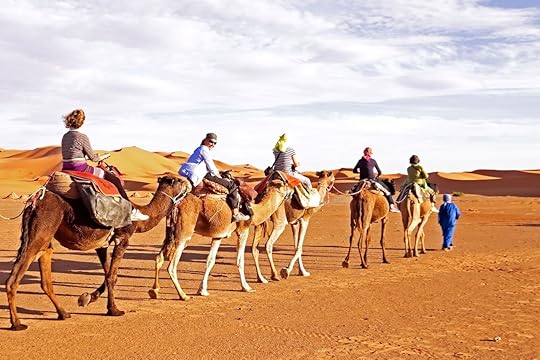
For thousands of years, camels have been used as a mode of transport in the desert. They can carry heavy loads and stay hydrated for hours at a time, attributes that made them vital to the survival of desert dwellers in various regions. However, as so often happens, a heavy influx in tourism to countries including Morocco, Egypt, Jordan, Australia, and China has led to the camels being used as a revenue generator for tour companies and locals, often at the expense of well-being conditions necessary for a healthy and happy life. Tourists are frequently offered the chance to ride these camels for hours on end with very little thought given to how this affects the camel’s well-being. Most people consider camels to be more than capable of undertaking these tasks. While history suggests that this is somewhat true, it is not always the case. Fortunately, there are some signs to look out for before deciding whether or not your camel ride is ethical.
Make sure the tour operators train their camels humanely.
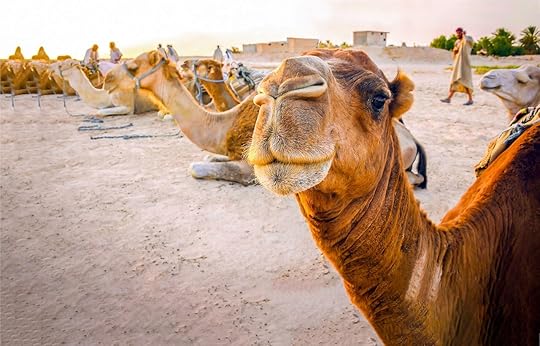
Photo: Svetlana Orusova/Shutterstock
Most people do not realize that camels are very emotional animals with distinct personalities. This means that if something is not to their liking, they’ll let people know. Due to the sheer size and power of a camel, without their cooperation, they are impossible to ride. Therefore, training a camel must be done with gentle hands. Should the handler seriously mistreat the animal, chances are the camel will refuse to be trained.
As the camels will need to be open to mounting, trainers are basically forced to handle them humanely, so the camel responds positively. It takes at least some level of experience to train a camel correctly, and most reputable tour operators have staff that can do this in a humane way. When booking a tour, do research online beforehand to see if you can find out how the camels are trained. And when in doubt: ask. Any guide that trains its camels properly should have no problem answering your questions.
Longer excursions are typically better for the camel than shorter jaunts.
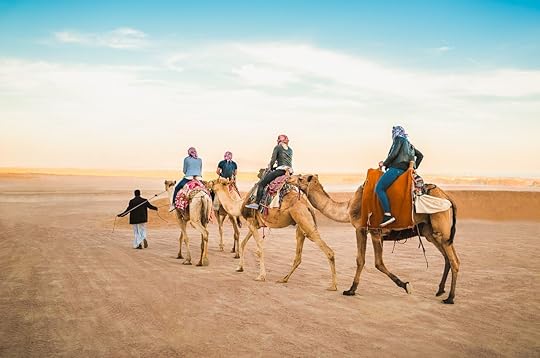
Photo: travin_photo/Shutterstock
Depending on where you are in the world, there is no shortage of options when it comes to choosing your camel-riding experience. In countries such as Morocco and India, longer treks or camel safaris are common. These excursions lead trekkers in intervals throughout the day, and the group spends the night sleeping in the desert before returning early the following morning. So you’re out for one day and one night with the same camel and group the entire time. A day-trip version is also available in these places, as well as Middle Eastern countries such as the United Arab Emirates and Jordan. Quite similar in nature, you get to spend a considerable amount of time with your camel, only on these trips you return to your starting point before dark.
On the face of it, these treks could be perceived as strenuous for the animal. In my experience, though, it’s quite the opposite. I was surprised by how well the camels were treated and how much attention went into their well-being. And the ground was, for the most part, easy for them to walk on and not too steep at any point. Groups take prolonged breaks on multiple occasions throughout the journey, generally tied in with hydrating the camel, even though guides are quick to ensure guests that the camels can last great lengths without water. There are generally only two camels per handler, whose job it is to be concerned with the camels’ well-being at all times — after all, their livelihood depends on the camels being healthy and able to work. At night, camels are allowed to roam free and sleep where they please. I didn’t feel like the camels were mistreated at any point of the safari.
The wrong kind of camel riding

Photo: Ingus Kruklitis/Shutterstock
And then there are the quick-hit short rides that offer little more than a quick hit of money for an operator. These camel rides are especially popular at world-renowned attractions such as Petra and the Great Pyramids of Egypt and often involve one or two hours of continuous riding around the site. It is not often tourists get the opportunity to see a camel, let alone ride one, and this makes these quick excursions wildly popular. The thing is that being on the back of an animal doesn’t make a new pyramid magically appear out of the desert — you’re essentially riding a camel for the sake of it as you don’t tend to see anything different than if you were walking.
You will inevitably be offered the chance to ride a camel at popular tourist sites around the world. However, what will be a one- or two-hour ride for you is likely a very different experience for the camel. The constant criticism aimed at these operators is that their camels are forced to work almost constantly throughout the day. Once tourists are willing to pay, the camels are put to work. Although there is no concrete evidence to suggest that this is damaging to the camel, it is clearly evident that the animals don’t always get looked after in the way that they should. Of course, money plays a big factor in this. With so many operators vying for business, they will never turn down a customer — even after a long day in the heat. Unfortunately, this too often means that the camels do not get the rest they require.
So… is camel riding unethical?

Photo: illpaxphotomatic/Shutterstock
There are so many grey areas when it comes to camel riding. On one hand, the animal rights organization PETA has taken its usual hardline stance in claiming that all forms of camel riding are considered abusive. Yet a similar charity, Born Free, has stated that there is no evidence suggesting that camel riding is harmful to the animal — though as we’ve discussed, they note that it depends on how the individual operation is run and the conditions of the animals within each organization. As is the case in nearly all revenue-based instances where animals are involved, there are people who seriously mistreat the animals. At the same time, though, most know that the camel is precious to their livelihood and see the benefit of treating the camel with the care that it needs. As noted above, read reviews and research the operators before you sign up.
Camel riding does limit the animal’s freedom as it involves a lot of work that perhaps they would rather not do. When a camel is being ridden by tourists, its sole purpose during that time is to bring pleasure to the paying customer. It might not damage the camel, but there is the possibility that it feels a slight discomfort. But standing against camel riding will never solve the issue completely because even if every tourist did, camels are too valuable to their communities and will be used as a way to either fund or assist the living situations of the locals there.
However, those that offer camel riding rely on tourists to make money. This gives the tourist so much power to dictate the conditions of the animal. Should you feel the animal is not getting enough rest or is treated badly, let the handlers know. Unhappy tourists for them means less money. Personally, I would say that camel riding is as ethical, if not more so, than any other wildlife experience if you go with the right tour operator and avoid hawkers directly in front of major tourist attractions. But if you do spot any red flags during your experience, you have the power to insist on change.
Consider the outcry in recent years over elephant riding in Thailand. Since the realization of just how bad riding an elephant is for the animal, tourists have begun to seek different opportunities to see them up close. Many have shunned elephant riding in favor of more ethical elephant sanctuaries. The tour operators will supply what the tourists demand. If they don’t stand for unethical practices, then change is only inevitable.
How to guarantee your experience is not harming the camel

Photo: Alexandra Lande/Shutterstock
Research can play a huge part in ensuring you make an ethical and informed decision as to whether or not to support an operator offering a camel ride. It is possible to research just about any tour operator and company online before booking, and this is the best place to start. Where a restaurant review doesn’t necessarily hint at the experience you will have, a review citing animal abuse or poor working conditions is far more likely to be valid, especially if there are multiple people citing similar concerns. This is not always a foolproof plan but can go some way to ensuring that both you and the camel have the best experience possible.
Avoid camel rides outside of major tourist attractions from informal operators, as well as rides that just last an hour or two. Do not ride a camel for the sake of riding it, say, to the Great Pyramids or Petra, and only opt to ride a camel to places further afield you couldn’t otherwise get to.
For longer itineraries, inquire about how much riding is involved and how much the camel is allowed to rest. Also, consider the terrain that you will be trekking as this can be a great indicator of how strenuous the trek will be for the camel.
Make sure that there is one camel per person. Often, as a way to make more money, companies will try to split the camels between two people, with both people riding at the same time. This is an obvious indicator that less care is given to the well-being of the animal.


More like this: 9 pro tips for visiting Petra without looking like a total tourist
The post How to have an ethical camel-riding experience appeared first on Matador Network.

Las Vegas residencies to see in 2019

There was a time when a Las Vegas residency meant an end-of-career artist cashing in on the nostalgia of their aging fan base. Then came 2013 and Britney Spears’ Piece of Me residency at Planet Hollywood. Spears not only catapulted her career to a new level, she simultaneously reshaped the entire residency landscape — by the final performance on December 31, 2017, she’d topped $130 million in ticket sales and inspired modern acts across multiple genres to follow in her footsteps. Even punk band Blink-182 did a Vegas residency in 2018.
A Vegas residency is now the thing for top talent to do, and many venues now feature some of today’s biggest stars and geared at a much younger demographic. Old Vegas stalwarts like Celine Dion and Donny & Marie are ending their longtime runs this year, making way for younger talent, all part of Vegas’s perpetual re-branding. For many of these artists — Lady Gaga and Bruno Mars, for example — seeing a show in this type of setting is a chance to see them in a much smaller venue than you would otherwise. Nostalgia is also a driving factor for a lot of these shows, too (looking at you, Paula Abdul), giving you yet another reason to visit Sin City this year. Here’s the lowdown on who’s playing.
Lady Gaga

Photo: Denis Makarenko/Shutterstock
Lady Gaga’s dual residency at the Park MGM is the biggest (read: most expensive) residency in Las Vegas to date, with the Mother Monster taking home a cool mil per show. Enigma brings out the neon-soaked disco queen we all first fell in love with in “Just Dance,” while Jazz & Piano finds an elegant, sophisticated Stefani Germanotta as just a girl with her piano reminding us of just how incredible a singing and songwriting talent she really is. Either way, you’ll see her perform “Shallow.” Dates for both shows run through November.
Enigma show dates:
June: 6, 8, 12, 14
October: 17, 19, 23, 25, 31
November: 2, 6, 8
Jazz & Piano show dates:
June: 9, 15
October: 20, 26
November: 3, 9
Florida Georgia Line

Photo: s_bukley/Shutterstock
The bad boys of “bro-country,” Florida Georgia Line, are coming back to Vegas this November with a run of four shows at the Zappos Theater at Planet Hollywood Resort & Casino. Fans can expect all their monster number one hits, including their 11-time platinum breakout “Cruise,” as well as newer hits from their most recent album Can’t Say I Ain’t Country.
Show dates: November: 6, 8, 9, 12
Bruno Mars

Photo: Fabio Diena/Shutterstock
In addition to Britney, Bruno Mars helped make Vegas residencies cool, running frequent extended engagements at The Cosmopolitan starting way back in 2013. He’s one of the best-selling recording artists of all time and cashed out pretty well the first time around, so it seemed only natural that he’d come back for more. He returns to the Park MGM this September for a string of seven gigs featuring his hits. You actually need to be there to catch it in person, because cell phone use during show is prohibited. Don’t expect to catch a wobbly, half-muted version of “Just The Way You Are” on YouTube the next morning.
Show dates: September: 3, 4, 7, 9, 10, 13, 14
Mariah Carey

Photo: Kobby Dagan/Shutterstock
With flaunted grandeur, raw talent, and a career about to enter its fourth decade, Mariah Carey is the most fitting residency star ever for a place like Caesars Palace. This being her second stint at The Colosseum, Carey is spicing it up with a run of Christmas shows titled in late November followed by a more general run called The Butterfly Returns in February of 2020.
All I Want For Christmas is You show dates: November: 22, 23, 27, 29, 30
The Butterfly Returns show dates: February: 14, 15, 19, 21, 22
Christina Aguilera

Photo: JStone/Shutterstock
To have Christina Aguilera be a judge on a show called The Voice is almost a joke, because she is THE voice and everyone who heard her powerhouse vocals soar above those of the other pop starlets of her day knows it. Her new residency, Christina Aguilera: The Xperience at the Zappos Theater at Planet Hollywood Resort & Casino runs through September.
Show dates:
June: 5, 7, 8, 13, 15, 16
September: 20, 21, 24, 27
Gwen Stefani

Photo: Debby Wong/Shutterstock
The queen of ‘90s ska/punk has arguably made an equally big name for herself as a solo artist. Haters, ask yourself where the rest of No Doubt is right now, and once you realize you have no idea, grab a ticket for one of the remaining dates of Gwen Stefani’s Just A Girl residency at Planet Hollywood. The show is pretty much an amalgamation of dancehall and Vegas-caliber showbiz, and a portion of ticket sales go to the Vegas-based Cure 4 the Kids Foundation.
Show dates: July: 5, 6, 10, 12, 13, 17, 19, 20, 24, 26
Janet Jackson

Photo: Everett Collection/Shutterstock
Celebrating the 30-year anniversary of the groundbreaking album Rhythm Nation, Janet Jackson’s brand-new show at the Park MGM, Metamorphosis, is a career retrospective of this living legend and icon. The shows play everything — seriously, everything — from her decades-spanning catalog, often choosing to cut out a verse and chorus or two just so they can squeeze in more. Whether you’re a fan from back in her Control days or you know her better as Damita Jo, you won’t be disappointed. And, of course, Rhythm Nation is the star set piece of this sprawling show. Metamorphosis dates run through August.
Show dates:
July: 24, 26, 27, 31
August: 2, 3, 7, 9, 10, 14, 16, 17
Paula Abdul

Photo: Debby Wong/Shutterstock
Before there was Britney, there was Paula. Elder millennials will remember playing the Forever Your Girl cassette on repeat and trying to learn MC Skat Kat’s dance moves from the “Opposites Attract” video. And was “Rush Rush” not, like, the most romantic song EVER? She, of course, went on to be a judge on a pretty popular TV show, but to those of us who grew up roller-skating to “Straight Up” and “Cold Hearted,” Abdul is forever our girl. It’s time to relive the skate-rink nostalgia, and to make it even more awesome, her new Vegas residency, Paula Abdul: Forever Your Girl, is at the Flamingo Las Vegas, so you can pregame at Margaritaville and walk outside to the fountains at Caesars going off across the street after the show.
Show dates:
August: 13, 15, 16, 17
October: 22, 24, 25, 26
November: 26, 28, 29, 30
December: 17, 19, 20, 21, 23, 22, 24, 27, 28, 31
January: 1, 3, 4
Lady Antebellum

Photo: s_bukley/Shutterstock
Country superstars Lady Antebellum launched their residency, Our Kind of Vegas, at the Pearl Concert Theatre inside the Palms Casino Resort earlier this year. They are the first country act to headline this venue and bring a little bit of Nashville to Vegas with their intimate, stripped-down performances.
Show dates: August: 23, 24, 28, 30, 31
Postmodern Jukebox

Photo: MGM Resorts
There is something innately Vegas about Postmodern Jukebox, even though they aren’t from Vegas and only just launched their residency, Scott Bradlee’s Postmodern Jukebox Hideaway, at 1OAK inside the Mirage this April. This was a show that was made for Vegas, though. They’re going to incorporate all the roaring ’20s glitz and glam of the Great Gatsby in covers of contemporary songs. Think “The Thong Song” and “All About That Bass.” The band and singers also transition from big band jazz to Motown to swing to doo-wop with lots of Vegas visual spectacle thrown in. The venue is perfect for it, too — vaguely Art Deco in decor with lots of black and brass accents, lending it a classic jazz era feel. This show is ongoing but check the website for dates and times.
Show dates: Ongoing, Thursdays to Saturdays
Robbie Williams

Photo: Andrea Raffin/Shutterstock
The UK’s top-selling British solo artist isn’t much for coming up with creative names for his concert events. But, Robbie Williams: Live in Las Vegas should still be an epic experience of modern pop and classic British wit. You already know the words to “Millennium” and “Rock DJ,” and if you’re actually a fan, “Party Like a Russian,” and this is your chance to see him in a small-ish club. Williams just wrapped up a two-year run of sold-out stadium shows, so don’t expect many intimate gigs in the future.
Show dates: Wednesdays, Fridays, and Saturdays, June 19 to July 6
Aerosmith

Photo: JStone/Shutterstock
Aerosmith could easily be dismissed as another old geezer band targeting its aging boomer demographic in yet another career-sunsetting Vegas residency, except for the fact that thanks to American Idol, younger generations apparently love Steven Tyler. Also working in the band’s favor is the fact that their residency at the Park MGM, Aerosmith: Deuces are Wild, has one of the most state-of-the-art audio and video immersive experiences in Las Vegas, designed by some of the same folks behind the extraordinary One World Observatory experience in New York. Even if you’re not a fan of post-“Pink” ‘smith, this is a show worth seeing.
Show dates:
June: 19, 22, 24, 27, 29
July: 2, 4, 7, 9
September: 21, 23, 26, 28
October: 1, 3, 6, 8
November: 14, 16, 19, 21, 24, 26, 29
December: 1, 4


More like this: The 7 best recreational cannabis dispensaries in Las Vegas
The post The best Las Vegas residencies you can still see this year appeared first on Matador Network.

Scientists find limit of endurance

When your coach tells you “run until you can’t run anymore,” it’s now more than just a vague motivational phrase. Scientists have actually pinpointed the limit of human endurance, and no matter how hard you persevere, there’s pretty much no surpassing it. The research, conducted by Duke University, showed that the endurance cap for the average person is 2.5 times the body’s resting metabolic rate, or 4,000 calories a day. The study analyzed Race Across the USA, where athletes ran 3,080 miles from California to Washington, DC. Along the way, scientists investigated the effect of the run on their bodies.
The study uncovered an important pattern between the length of a sporting event and the amount of energy expended. The longer the event lasted, the harder it became to burn through calories, meaning you can safely surpass your base metabolic rate during short periods of exercise, but that level of exertion is ultimately unsustainable.
Dr. Herman Pontzer of Duke University told the BBC, “You can do really intense stuff for a couple of days, but if you want to last longer then you have to dial it back. Every data point, for every event, is all mapped onto this beautifully crisp barrier of human endurance. Nobody we know has ever pushed through it.”
One of the reasons for this endurance limit is because the body simply can’t absorb, digest, and process enough calories and nutrients to sustain more energy use. It can burn up its own resources for shorter events, but longer events require a balancing of energy use, and this is where the limits of human endurance are typically reached. 
H/T: BBC

More like this: How to stay committed to your health and wellness goals while traveling
The post Scientists have found the limit of human endurance appeared first on Matador Network.

Massive cloud of ladybugs migrating

If you happened to be looking up at the sky on Tuesday night around California’s San Gabriel Mountains, you might have noticed a strange phenomenon. No, it wasn’t a giant cloud front moving in — it was a “bloom” of ladybugs gliding through the air, and at first, it was quite confusing to weather forecasters.
The large echo showing up on SoCal radar this evening is not precipitation, but actually a cloud of lady bugs termed a "bloom" #CAwx pic.twitter.com/1C0rt0in6z
— NWS San Diego (@NWSSanDiego) June 5, 2019
Mark Moede, a forecaster with the National Weather Service, said, “The radar was showing there was something out there. We looked at the satellite image but there weren’t clouds that size in the area.” After a bit of investigation, it was discovered that the phenomenon was actually a giant group of ladybugs, called a “bloom,” moving across the sky. “It’s an annual bloom that happens around this time of year,” he said.
The bloom appeared on weather screens as 80 miles long and wide, and was flying at 5,000 feet above the ground.
Casey Oswant, San Diego weather service meteorologist, told The Desert Sun that there weren’t many clouds in the area during that time, so the radar activity was curious. “This radar return was much larger than what those clouds could’ve been producing,” he said.
The bloom covered an area of over 1,000 square miles in total as it moved south across California, and though the bloom might be an annual event, this year’s ladybug population was particularly high. 
H/T: SF Gate

More like this: The 7 most fascinating flowers around the world you need to see in person
The post An 80-mile-long cloud of ladybugs was spotted flying over California appeared first on Matador Network.

June 5, 2019
Visit Deadwood, South Dakota
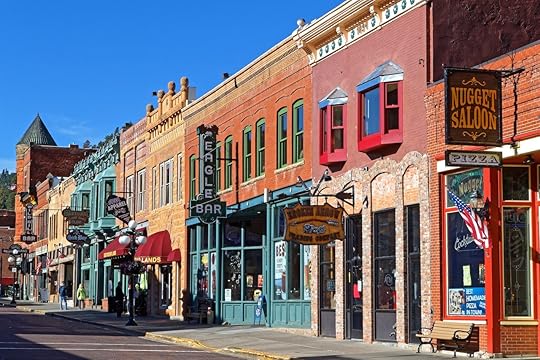
Usually, when gunshots ring out in the middle of the street, it’s not the sign of a good vacation.
That was my first thought, at least, when my evening stroll to happy hour was interrupted by an enormously loud “BANG” that made me jump straight up in the air.
“Guuuuuuuun fiiiiiiiiiiight!!!!” a young man in a cowboy hat yelled as he stood in the middle of the street, pistol in the air. Normally, I’d call the nearest embassy and suggest a travel advisory.
“Is that a real gun?” a kid who looked about five-years-old asked his older brother, who was walking about 10 feet behind me.
“Yep,” the older brother said, probably causing lifelong psychological damage. “There’s about to be a big ol’ gunfight! You gone see someone DIE today!”
He was, thankfully, joking with his little brother. Because, also thankfully, we were not in a war zone but rather in Deadwood, South Dakota, where “gunfights” are just part of the daily entertainment.
The live-action shootouts are part of why people come to this little town in the Black Hills of South Dakota. A place where the Wild West still lives in the brick streets and aging saloons, and it’s turned a violent past into a family attraction.
The “wickedest place on Earth” was wild long before HBO

Photo: Vicki L. Miller/Shutterstock
If you’re a fan of the Deadwood TV show — and the corresponding movie that premiered last week — you might assume Deadwood is a sort of TV theme town created to capitalize on the show’s success. The pristine old-West facades and campy shoot-em-ups in the historic downtown certainly feel a little like a Universal Studios backlot. But rest assured, it is quite the reverse.
The TV show is a not-completely-accurate depiction of life in Deadwood in and around its gold rush of the 1870s. It kicked off in 1875 when prospectors found gold in this barren little gulch. Within a year, over 5,000 miners had come in search of a quick fortune. And cramming 5,000 dirty, desperate men between two tall mountains is never a recipe for peace and quiet.
Along with the miners came plenty of people trying to separate them from their gold, from prostitutes to saloon owners to gamblers. Law enforcement was about as common as showers. And in its heyday, the city saw nearly a death a day from crime, suicide, or disease.
In just a year, it became known as “the wickedest place on Earth.”
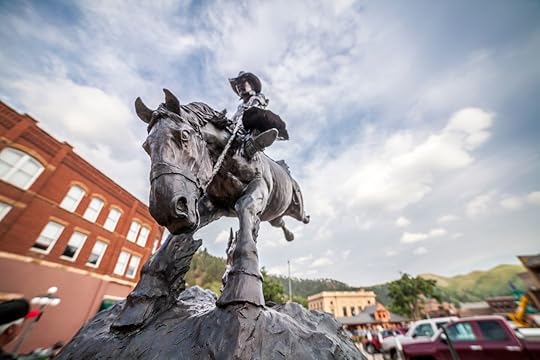
Photo: Sopotnicki/Shutterstock
This den of sin and riches brought all the characters of the Wild West, from “Wild Bill” Hickock to Calamity Jane, and others with names like Potato Creek Johnnie and Deadwood Dick. Hickock lasted only a couple of months before getting shot during a poker game. Shortly after, notorious lawman Seth Bullock finally brought some semblance of order.
Eventually, the gold boom ended. And a series of fires, floods, and other disasters emptied the city of its violent reputation. It then turned to tourism to keep the economy going, and prostitution was legal here until the early 1980s.
“We used to get thousands of men coming here for deer hunting every year,” Andy “Cookie” Mosher tells me as we stand near the spot where Wild Bill was shot. He is my tour guide, dressed in period costume as Con Stapleton, Deadwood’s only Federal Marshall. “Only thing is, you seen the deer around here, right? They ain’t very big. They were all coming here for this.”
He motions to the upper floors of the saloons across the street. The buildings date back to the 1880s and were once home to numerous brothels marked by colored doors. Those brothels were Deadwood’s biggest tourist attraction until a federal raid in 1980. Cookie says the upstairs has sat untouched ever since. Talk of a brothel museum is bubbling.
Despite being designated a National Historic Landmark, Deadwood fell into disrepair. That changed in 1989 when the state allowed it to become the only place outside Las Vegas and Atlantic City with legalized gambling. With one vice gone, another one filled the void. And Deadwood, once again, became a destination for people looking to do things they wouldn’t dare at home.
A haunted past leads to a family-friendly present

Matador Network's Blog
- Matador Network's profile
- 6 followers



